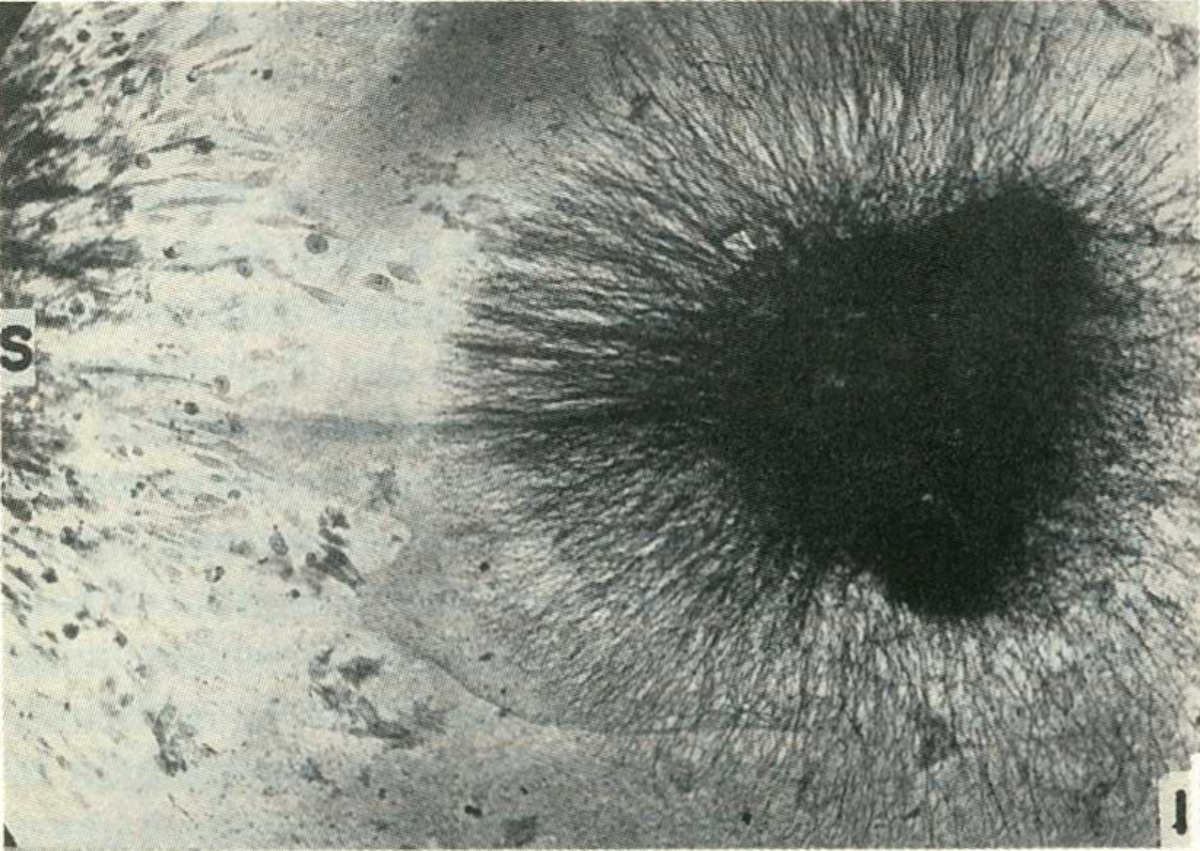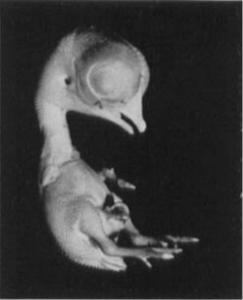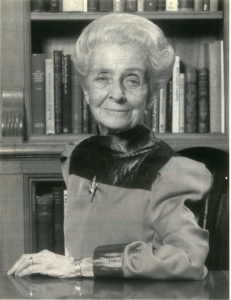Nerve Growth Factor
A Bolt in the Dark
The chaos of any moment, especially of a moment that requires one to spend a great deal of time alone, is an opportunity to engage with this deliberative way of living.

The scene is of the world falling apart:
It is the late spring of 1942. We are in the city of Turin in the north-west of Italy, near the border of Nazi-occupied France. Mussolini’s Blackshirts march through the streets. Every few days the anxiety and senselessness of the moment is cracked by the whine of British bombers, who have made their way from the Allied invasion of North Africa. On occasion, they fly over the city, releasing their cargo as families scramble to their basements, despite the risk of being trapped beneath the rubble of their precarious homes—the fate of so many.
Amid this chaos, along one ordinary street within a quite common home, there is a young Jewish-Italian woman at work. She is tall, probably 30, with dark hair and hawkish features. She is toiling away at her bedroom desk, her eyes fixed on the task before her. She is holding make-shift micro-scalpels that she has ground from sewing needles. To her left, there is a powerful Zeiss microscope and a syringe filled with a dark-silver fluid. To her right, there is what appears to be an incubator, also make-shift, fashioned from bent pieces of wood that is being warmed by a small, portable oven. Inside the incubator lie over a dozen fertilized chick eggs.
Perched over her nest, scalpel in hand, Rita Levi-Montalcini delicately rotates her wrist, carving a small window into one of the eggs. Peering inside, she sees the growing embryo—she estimates it is on its eighth day of development. With imperial attention, RLM uses her scalpel to sever a wing bud of the growing chick, carefully avoiding the entanglement of arteries coiled below the embryo’s translucent skin. RLM then re-covers the little window with the bit of eggshell she had removed and a piece of tape and then tenderly places the egg back into the incubator.
Rita Levi-Montalcini was trying to solve a problem.
Look down at your hands for a moment. Move your fingers slowly and deliberately. Your decision to move your fingers begins on the outermost crust of your brain (cortex). That signal is then sent down through one long nerve (upper motor neuron) until it reaches about halfway down your spinal cord, where that first nerve activates a second long nerve (lower motor neuron) that sends its signal from your spine out through your arm and into your fingers. In other words, just two nerves connect the top of your head to the tips of your fingers. Even more incredibly, your nerves were not initially connected to their correct locations. During your development the nerves grew out from the spine through your body until they reached their correct target. How did your body do this? How did your brain and the spine send their nerves through your body, bringing your limbs under the brain’s command?

To answer this question RLM constructed her “Robinson Crusoe” laboratory in her bedroom. Here, she would destroy a bit of a growing chick’s periphery (a leg or a wing bud) and then allow the chick to grow for several more days. Then, she would cease the development of the chick by injecting it with a dark-silver solution that would fossilize its growing nerves at a single moment of their growth. Gazing at their silvered nervous systems below her microscope, RLM would then compare the development of nerves on the side of the spine with and without the destroyed limb. RLM found that when she destroyed a wing bud, the nerves that would normally innervate that limb withered and died. She also found that if she added a bit of tissue, sewing the severed limb bud to the embryo’s opposite side, the corresponding section of spinal cord—now projecting its nerves towards two limbs—would balloon. Rita Levi-Montalcini theorized that the limbs were releasing plumes of a life-giving chemical that caused the nerves to grow, what she called a “trophic factor.” When the limb was destroyed, so too was the trophic factor, causing the nerves to atrophy. When a second limb was added, additional factor was produced, causing excess growth.
All of this she did with the buzz of planes overhead and the sound of soldiers in the streets.
Consider this story again for a just a moment, not as a movie or some epic from history but actually as something you would do. Imagine the world is falling apart around you. Outside your window there is only chaos. In RLM’s case, the scientists of her own country declared her race to be biologically distinct from the main population. Airplanes begin to drop bombs on your city. And yet, you decide to spend your time dissecting chick embryos so you can explore some esoteric neuro-embryological problem about the effect of peripheral limb tissue on the central nerve growth. And you have no idea if you will make a breakthrough or survive to report it if you do. Can we even sympathize with a person like this? What can Rita Levi-Montalcini possibly be made of? She appears to have stridden across the stage of history and done the impossible.
When the war finally came to an end, RLM was able to prove the existence of her theorized “trophic factor.” She left Italy and moved to the United States, to Washington University in St. Louis. There, she and her biochemist collaborator Stanley Cohen conducted a series of experiments that allowed them to isolate RLM’s mysterious factor in powerful concentration. They called it Nerve Growth Factor (NGF), the first of a broad class of growth factors the body uses to organize during its development. They would win the Nobel Prize in 1986 for their discovery.
I want to insist that, though Rita Levi-Montalcini’s discovery belongs in the annals of history as one of the greatest stories of scientific discovery of all time, her own reflections of her life and work reveal something common about what we are capable of in the midst of crisis.

The first aspect of RLM’s reflection (all from her 1988 autobiography, In Praise of Imperfection) addresses an obvious issue: None of us are sitting on Nobel Prize-winning ideas that we are waiting to hatch with a few months of downtime. Neither was RLM. After RLM was banned from working in the Italian universities in the fall of 1938, she tried to continue her research by traveling to Belgium and then later by working secretly as a doctor in Italy. But the threat of being exposed to the Fascists became too great, and she resigned herself to functional house arrest. There she “took refuge in reading and cultivating relationships with the many friends who scorned the danger of being accused of pietism.” RLM did not know what else to do.
For eight whole months RLM resigned herself in defeat. Then a very ordinary experience wrenched her from her stupor. A friend asked RLM what new projects she was working on. She had no response—nothing. Annoyed, her friend told to her to call Santiago Ramón y Cajal to mind, the 19th century Spanish neuroscientist whose fundamental work was done in poverty and isolation. “One doesn’t lose hope in the face of difficulties,” he said. Take up your work. Uncertain but inspired, RLM decided to take a step into the dark.
According to RLM, “the pleasure I was already savoring in anticipation [of my research] was enhanced by the prospect of carrying out the project under the conditions contingent on the prohibitive racial laws (italics mine).” In other words, RLM’s conception of persecution and tragedy was inverted, like a Necker cube, to see her social isolation as opportunity. For RLM, the atmospherics of fascism would no longer choke her work; instead, the very laws mandating her to stop her work would fuel it. It was as though she glimpsed herself in history, grasping what it would mean for her to conduct her work amid the decay of an intellectual and cultural holocaust.
Perhaps such a grand sense of one’s own historical importance is what we would expect from such an epic story. It affirms our common sense of what it must be like to be a genius. Only the real übermensch could create their own agency from the broken shards of their life.
But it would be a mistake to think RLM generally had a vivid sense of purpose. In fact, RLM’s work grew slowly and circuitously. Like the embryonic nerves she studied, RLM’s development as a scientist was proximal: It was guided not towards some ultimate target—she did not know the terminal discovery of her experiments (or if they would yield any discovery at all). Instead, like the growing nerves, she oriented herself towards the nearest source of sustenance, whatever experiment she could use to spend her time meaningfully and deliberately.
Indeed, after deciding she would take up a research project, she still did not even know what she would study. Before the war, RLM had been a young neuroscientist with a blossoming career. But now, she did not have the materials nor the expertise to conduct her experiments alone. So she did something simple. She did not create a new, unprecedented experiment. Instead, she copied another scientist’s experiment, part for part, as a way of checking his conclusions and filling her time.
In other words, RLM’s motivation and decision to start working again preceded her idea for the project itself. She did not know what she would do; she simply made the decision that she would do something. And when she did make the decision to begin a project, she did not begin thinking “outside-the-box.” She was not attempting to do something innovative. Instead, RLM approached how she would fill her time from within her box. She simply started a project she knew she could accomplish. The fact that she studied development was not an accident—eggs were one of the only available sources of food. And indeed, she and her family even used many of her used experimental eggs for sustenance.
Her experience of daily living was also far calmer than in those riveting moments thinking of Cajal after the conversation with her friend. Again in her autobiography, she reflects that her ability to devote herself to “solving this small neuro-embryological problem while German armies were advancing throughout Europe… lies in the desperate and partially unconscious desire of human beings to ignore what is happening in situations where full awareness might lead one to self-destruction.” Perhaps in a moment of fire and waste, when everything is outside your control, the most natural thing is to find a lacuna of quiet, sense, and control.
Here, we do not see the immortal genius. We see someone terrified, someone who does not know what the next day and week will bring.
And yet, in this quiet that she created for herself, RLM was able to stir herself steadily towards a long-term project of deliberate work. Contrary to what appears like an effortless hypothesis that RLM conjured after a graceful experiment, RLM constructed her “neurotrophic hypothesis” not all at once but in fragments over the course of many years. From her Robinson Crusoe laboratory, she was able to make her preliminary conclusions only after months of uninterrupted, ceaseless work.
The primacy of enduring work has been known by historians of great innovators and scientists for many decades. Indeed, the creative process is not solely about novelty and utility. It is also about duration and deliberation. Consider the apocryphal but pervasive stories of the creative genius who is effortlessly struck by a moment of rapturous insight: Archimedes, Newton, Franklin, Darwin, Einstein. I am not suggesting people do not have moments of insight, of course. Instead, I am suggesting that insight is but the punctuation of long periods of thinking and work. To borrow the historical psychologist Howard Gruber’s striking metaphor, moments of insight are akin to the white crest of a wave while the daily trench of work is akin to the greater body of water: The crest of insight is the wave’s most beautiful element, but it is only possible because of a much longer, deeper structure of thought and work that sustains and stabilizes it.
A second metaphor may be helpful for considering the relationship between insight, work, and creativity. Consider the kiln. The burning heat of the kiln (the insight) hardens brick (knowledge), making it durable, and imbues it with a color and meaning. But no building can be constructed in a blaze. The whole laborious process of constructing an edifice of knowledge, scolded by insight, is more properly considered the creative enterprise.

This point is sharpened by contrasting pervasive motifs of creativity with the view embodied by Rita Levi-Montalcini. Modern motifs of creativity, which draw from our apocryphal stories, are of spontaneity, effortlessness, blossoming association, unlimited connectivity, and frictionless ideation. In this view, creativity is characterized by flashing lightbulbs, bursting Eurekas!, and the euphoria of manic genius. The view embodied by Rita Levi-Montalcini is of almost monkish commitment to one’s craft, of the austerity of daily practice, and of the long and strenuous process of engraving character. Rita Levi-Montalcini’s work resembles the wave and the kiln.
Perhaps the story of Rita Levi-Montalcini still sounds unrelatable. Perhaps she still seems to exist on another plane of existence that doesn’t include everyday people. However unlikely her story is, we can learn from the challenges she faced and the solutions to which she resolved herself.
The chaos of any moment, especially of a moment that requires one to spend a great deal of time alone, is an opportunity to engage with this deliberative way of living. On occasion, like RLM, we may become aware of ourselves and what it means for us to carry out our work in the midst of ensuing crisis. But in the daily trenches of life, while the world outside one’s window spirals, we have the choice to create our own lacunas of quiet, sense, and control, where we can strive to direct our energy toward long-term, meaningful projects that enliven not only ourselves but the world to which we will eventually return.
This story will be part of a longer chronicle entitled “Improvising Education” that will be published by Routledge/Taylor & Francis in 2021.






